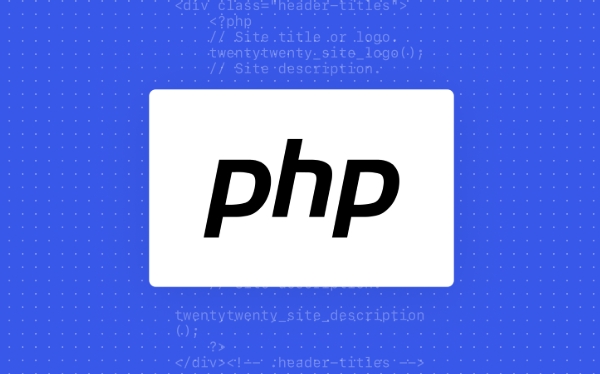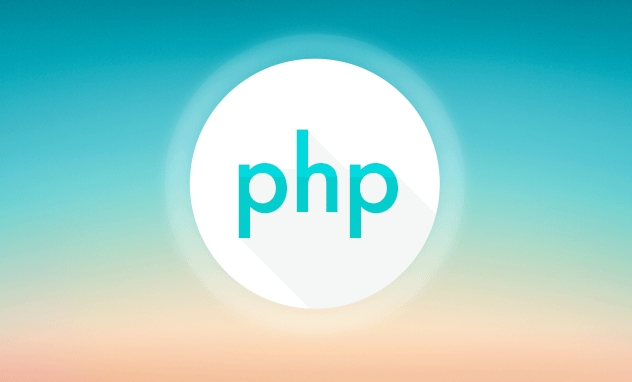The easiest PHP framework to learn is Laravel, due to its clean documentation, expressive syntax, and built-in tools for common tasks like routing, authentication, and database interactions. 1. Laravel offers beginner-friendly documentation with practical examples. 2. It includes features such as built-in authentication, the Artisan command-line tool, Eloquent ORM, and Blade templating engine. 3. These tools reduce boilerplate code and simplify development. For lighter alternatives, 4. CodeIgniter provides minimal configuration and a lightweight structure, and 5. Lumen offers a simplified version of Laravel ideal for APIs or small apps. Learning tips include starting with basic routes and controllers, using Artisan commands, mastering Composer, following real-world tutorials, and using local environments like Laragon or Laravel Sail. While Laravel balances power and simplicity, beginners can later explore more advanced features or scale back if needed.

If you're looking for the easiest PHP framework to learn, Laravel is often the top recommendation. It's not just popular—it’s designed with developer experience in mind, which makes it much more approachable than other frameworks like Symfony or CodeIgniter, especially for beginners.

The key reasons Laravel stands out are its clean documentation, expressive syntax, and built-in tools that handle common tasks like routing, authentication, and database interactions. That doesn’t mean it’s the only option, but if your goal is to get up and running quickly without getting bogged down by complexity, Laravel fits the bill.

Why Laravel Is a Good Starting Point
One of the main things that makes Laravel easy to learn is how well everything is documented. The official docs are beginner-friendly and filled with practical examples. You don’t have to guess how things work—most questions you’ll have are already answered there.
Also, Laravel comes with many features out of the box, such as:

- Built-in authentication scaffolding
- Artisan command-line tool for generating code
- Eloquent ORM for working with databases easily
- Blade templating engine for clean front-end integration
These tools reduce the amount of boilerplate code you need to write, so you can focus more on building functionality rather than setting up infrastructure.
Simpler Alternatives Worth Considering
If Laravel still feels a bit heavy, CodeIgniter or Lumen (a micro-framework by Laravel) might be better for small projects or learning the basics without too much abstraction.
- CodeIgniter has minimal configuration needs and a very lightweight footprint.
- Lumen strips away many of Laravel’s full-stack features, making it faster and simpler for APIs or smaller applications.
Both are great stepping stones. CodeIgniter is especially good if you want to understand how PHP frameworks structure things before diving into Laravel.
Learning Tips That Help
When you're starting with any PHP framework, it’s easy to feel overwhelmed by all the new concepts. Here are a few tips to make it smoother:
- Start with basic routes and controllers before jumping into advanced topics.
- Use Laravel’s built-in tools like
php artisan make:controllerto generate files automatically. - Don’t skip learning Composer—it’s essential for managing dependencies in modern PHP.
- Follow along with simple tutorials that build real things, like a blog or task list.
It also helps to use a local development environment like Laragon or XAMPP, or even Laravel’s own Sail system based on Docker. These save time on setup and let you focus on writing code.
Final Thoughts
Laravel is widely considered the easiest PHP framework to learn because it balances power with simplicity. Once you get comfortable with the basics, you can explore deeper into things like queues, testing, and package development. But at the start, you don’t need to worry about all that.
For most people, jumping into Laravel and sticking with it through the early hurdles is the way to go. If it ever feels too big, remember you can always scale back with Lumen or another lighter framework later.
Basically, give Laravel a try—it’s probably easier than you think once you get going.
The above is the detailed content of what is the easiest php framework to learn. For more information, please follow other related articles on the PHP Chinese website!

Hot AI Tools

Undress AI Tool
Undress images for free

Undresser.AI Undress
AI-powered app for creating realistic nude photos

AI Clothes Remover
Online AI tool for removing clothes from photos.

Clothoff.io
AI clothes remover

Video Face Swap
Swap faces in any video effortlessly with our completely free AI face swap tool!

Hot Article

Hot Tools

Notepad++7.3.1
Easy-to-use and free code editor

SublimeText3 Chinese version
Chinese version, very easy to use

Zend Studio 13.0.1
Powerful PHP integrated development environment

Dreamweaver CS6
Visual web development tools

SublimeText3 Mac version
God-level code editing software (SublimeText3)
 PHP Variable Scope Explained
Jul 17, 2025 am 04:16 AM
PHP Variable Scope Explained
Jul 17, 2025 am 04:16 AM
Common problems and solutions for PHP variable scope include: 1. The global variable cannot be accessed within the function, and it needs to be passed in using the global keyword or parameter; 2. The static variable is declared with static, and it is only initialized once and the value is maintained between multiple calls; 3. Hyperglobal variables such as $_GET and $_POST can be used directly in any scope, but you need to pay attention to safe filtering; 4. Anonymous functions need to introduce parent scope variables through the use keyword, and when modifying external variables, you need to pass a reference. Mastering these rules can help avoid errors and improve code stability.
 How to handle File Uploads securely in PHP?
Jul 08, 2025 am 02:37 AM
How to handle File Uploads securely in PHP?
Jul 08, 2025 am 02:37 AM
To safely handle PHP file uploads, you need to verify the source and type, control the file name and path, set server restrictions, and process media files twice. 1. Verify the upload source to prevent CSRF through token and detect the real MIME type through finfo_file using whitelist control; 2. Rename the file to a random string and determine the extension to store it in a non-Web directory according to the detection type; 3. PHP configuration limits the upload size and temporary directory Nginx/Apache prohibits access to the upload directory; 4. The GD library resaves the pictures to clear potential malicious data.
 Commenting Out Code in PHP
Jul 18, 2025 am 04:57 AM
Commenting Out Code in PHP
Jul 18, 2025 am 04:57 AM
There are three common methods for PHP comment code: 1. Use // or # to block one line of code, and it is recommended to use //; 2. Use /.../ to wrap code blocks with multiple lines, which cannot be nested but can be crossed; 3. Combination skills comments such as using /if(){}/ to control logic blocks, or to improve efficiency with editor shortcut keys, you should pay attention to closing symbols and avoid nesting when using them.
 How Do Generators Work in PHP?
Jul 11, 2025 am 03:12 AM
How Do Generators Work in PHP?
Jul 11, 2025 am 03:12 AM
AgeneratorinPHPisamemory-efficientwaytoiterateoverlargedatasetsbyyieldingvaluesoneatatimeinsteadofreturningthemallatonce.1.Generatorsusetheyieldkeywordtoproducevaluesondemand,reducingmemoryusage.2.Theyareusefulforhandlingbigloops,readinglargefiles,or
 Tips for Writing PHP Comments
Jul 18, 2025 am 04:51 AM
Tips for Writing PHP Comments
Jul 18, 2025 am 04:51 AM
The key to writing PHP comments is to clarify the purpose and specifications. Comments should explain "why" rather than "what was done", avoiding redundancy or too simplicity. 1. Use a unified format, such as docblock (/*/) for class and method descriptions to improve readability and tool compatibility; 2. Emphasize the reasons behind the logic, such as why JS jumps need to be output manually; 3. Add an overview description before complex code, describe the process in steps, and help understand the overall idea; 4. Use TODO and FIXME rationally to mark to-do items and problems to facilitate subsequent tracking and collaboration. Good annotations can reduce communication costs and improve code maintenance efficiency.
 Quick PHP Installation Tutorial
Jul 18, 2025 am 04:52 AM
Quick PHP Installation Tutorial
Jul 18, 2025 am 04:52 AM
ToinstallPHPquickly,useXAMPPonWindowsorHomebrewonmacOS.1.OnWindows,downloadandinstallXAMPP,selectcomponents,startApache,andplacefilesinhtdocs.2.Alternatively,manuallyinstallPHPfromphp.netandsetupaserverlikeApache.3.OnmacOS,installHomebrew,thenrun'bre
 How to access a character in a string by index in PHP
Jul 12, 2025 am 03:15 AM
How to access a character in a string by index in PHP
Jul 12, 2025 am 03:15 AM
In PHP, you can use square brackets or curly braces to obtain string specific index characters, but square brackets are recommended; the index starts from 0, and the access outside the range returns a null value and cannot be assigned a value; mb_substr is required to handle multi-byte characters. For example: $str="hello";echo$str[0]; output h; and Chinese characters such as mb_substr($str,1,1) need to obtain the correct result; in actual applications, the length of the string should be checked before looping, dynamic strings need to be verified for validity, and multilingual projects recommend using multi-byte security functions uniformly.
 Learning PHP: A Beginner's Guide
Jul 18, 2025 am 04:54 AM
Learning PHP: A Beginner's Guide
Jul 18, 2025 am 04:54 AM
TolearnPHPeffectively,startbysettingupalocalserverenvironmentusingtoolslikeXAMPPandacodeeditorlikeVSCode.1)InstallXAMPPforApache,MySQL,andPHP.2)Useacodeeditorforsyntaxsupport.3)TestyoursetupwithasimplePHPfile.Next,learnPHPbasicsincludingvariables,ech






